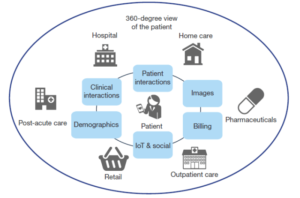Patient Safety Awareness Week (March 11-17, 2018), which the Institute for Health Improvement (which merged with the National Patient Safety Foundation last year) has been coordinating for the last fifteen years. The IHI cites studies which suggest that medical error and preventable harm remain major sources of injury and death among patients.
A recent national survey conducted by the IHI/NPSF Lucian Leap Institute and NORC at the University of Chicago found that 1 in 5 people reportedly experienced a medical error in their own care, and one-third reported an error in the care of a close relative or friend. Of those who experienced errors, 73 percent said the error had a long-term or permanent impact on the patient’s
physical health, emotional health, financial well-being, or family relationships

“Making sure patients and families feel that it’s okay to speak up and ask questions is really a critical element in patient safety,” said Tejal K. Gandhi, MD, MPH, CPPS, Chief Clinical and Safety Officer, IHI. “Even health professionals sometimes fear speaking up, and that’s directly tied to the culture of the organization in which they work. In order to improve, health care organizations need to see flaws or gaps in safety, encourage people to report problems when they see them, and take action to correct them.”
Patient Safety is a Team Sport
When care teams, across different disciplines, work more collaboratively together, mistakes can be reduced, and patient satisfaction and the experience of their friends and families can be dramatically improved. The experience of medical teams and staff is also improved when doctors, nurses, certified nurse assistants, technicians, anesthesiologists, physician assistants, are able to communicate more systematically and easily.
Better communications is possible now with better technologies, artificial intelligence (AI), the implementation of electronic medical records, but we have found in completing projects at many large hospitals that culture may play the most important role.
The best hospitals in the US and around the world pay close attention to culture and communications, particularly in the most intense areas (emergency rooms, intensive care units, operating rooms) and the most delicate situations (cancer diagnosis, chemotherapy, radiation – for adults and children).
Cohesive teamwork is all about improving communication around the circle of care, reduces errors, improves patient outcomes, reduces costs through decreased length of stay, and results in greater satisfaction scores across the board (patients, families, staff).
The most enlightened and successful hospital administrators are those who see their role as “Chief Experience Officers” whether they are CEOs, Presidents, Department Chairs or other key leaders.
More and more care “teams” are being assigned to shifts together, rather than random scheduling, as these teams learn to work better and better as a unified “organism” able to understand and appreciate each other’s skills and approaches, and building respect, rapport and pride over months and years together.
Teaming Up for the Greater Good
We’ve seen improvements through our work in many areas, including:
Emergency Care, where clear and steady team communications can make a difference in minutes or even seconds and crisis resource management principles pay off in better patient outcomes
- Intensive Care, particularly when teams are managing acute trauma patients with severe injuries and where long shifts are sometimes unavoidable and team members backing each other up makes life easier for all those in the business of saving live
- Respitory Care, including improvements in ventilated patient care and faster reduction in the reliance of mechanical ventilation
- Psychiatric Care, including stress response to surgery and greater preparation for discharging into a positive home or long-term care environment
- Neuroscientific Care, including hospital stays following neurosurgery, where compassion is one of the most highly valued traits by patient’s friends and family
Patient Safety Awareness flows together with Patient Experience, and when hospitals put collaboration and communications together with culture, everybody benefits. These are conscious choices, and this week while we all get together to shine the light on patient safety, we look to the leaders and visionaries running some of our largest and most successful hospitals, hospital systems, medical centers and medical universities to set the examples, and create the models for more efficient and more effective healing.

